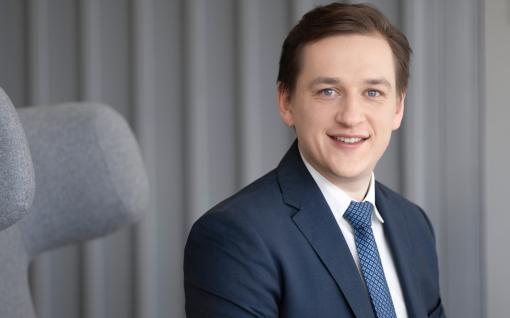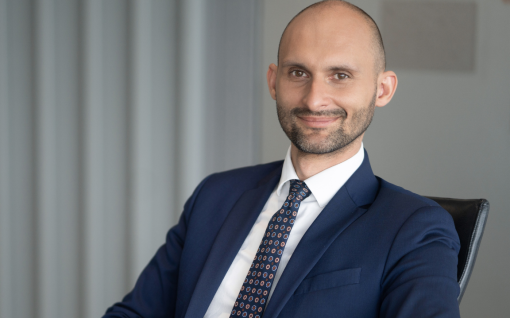Public attitudes to deepfake
When reading about deepfake, one might get the impression that the fraud or theft it causes is always someone else’s problem. While we are aware that social engineering is developing, there is still a perception that it is so underdeveloped that we can easily spot it. Even without careful analysis.
We also reaffirm our belief that deepfake is still a harmless tool, primarily used to create funny videos, memes or parodies. After all, satirical videos appear on Instagram, Facebook or Tiktok reels, in which a character resembling a public figure expresses themselves in a politically incorrect or even indecent way, just to amuse us.
But this is only illusory. Over the last five years, the use of deepfakes has become almost ubiquitous. Recently, for example, the NASK National Research Institute reported that in May 2024, new deepfakes were created with Rafał Brzoska, Andrzej Duda and Robert Lewandowski. Cybercriminals illegally used images of public figures to encourage people to make dubious financial investments.[1]
Deepfakes in the US election campaign and on Wall Street
Worrying news about deepfakes also comes from the United States.
The Guardian reports[2] that in the presidential race, Donald Trump has been publishing deepfakes of Taylor Swift, Elon Musk and Kamala Harris herself to spread information favourable to him.
On the X platform, Donald Trump posted a mosaic of photos showing images of women with the caption “Swifties turning to Trump after ISIS foiled Taylor Swift concert” and the singer herself dressed as Uncle Sam in front of the US flag, encouraging people to vote for the former president. He also posted a photo of a woman leading a communist rally. And although her face is not visible, it is clear that she is Kamala Harris. Trump’s X also features a video of him dancing with Elon Musk.
Deepfake has also left its mark on the financial world.[3] As the Wall Street Journal reports, the industry has a so-called Taylor Swift problem. As with images of Taylor Swift endorsing Trump, investors are being ‘duped’ by an AI-generated video in which a Commonwealth Bank executive explains that he has created an automated tool to achieve high investment returns.
Deepfakes in Poland and legal ways to combat them
Before the holidays, dozens of photos and information containing offensive and false information about Omenaa Mensah and her husband, Rafał Brzoska, circulated on Polish Facebook. Some said she had been beaten up by him, while others said she had been sent to prison. Some of the information was even more serious. Some false posts claimed that the presenter was dead.
Omenaa Mensah reported the case to the President of the Personal Data Protection Office (UODO).
She claimed that she had discovered up to 263 adverts (many of which had 2 to 6 versions), and that the number of adverts was constantly increasing as she received notifications of new ones every day. In addition, this type of information severely affected her sense of security, dignity and privacy and negatively affected the emotional state of her relatives.
In accordance with the GDPR, the President of the UODO has ordered Meta Platforms Ireland Limited to stop displaying fake advertisements using real data and images of the journalist and presenter on Facebook and Instagram in Poland for three months.
The decision[4] was based on Article 70(1) and (2) of the Personal Data Protection Act of 10 May 2018 read together with Article 66(1) GDPR.
In Poland, this is probably the first decision of its kind by the regulator obliging one of the big tech companies to protect a citizen’s personal data by banning an advertisement with her image.
The fight against deepfakes disseminated by large social media platforms is therefore possible.
It is also financially feasible. And not just for public figures, but also for average citizens. In fact, a complaint to the President of the Personal Data Protection Office is free of charge. However, before filing a complaint, it is advisable to consult a specialist who will make a preliminary assessment of whether a given infringement qualifies.
How else to fight deepfakes
The use of deepfake technology also has civil and criminal implications. Liability for infringement can also be found in copyright, civil and criminal law.
The use, alteration or modification of works may infringe both the moral and economic rights of the original author, resulting in liability for damages as well as criminal liability. It may also be an infringement to disseminate an image without the consent of the person depicted in the illustration, photograph or graphic.
From the point of view of infringement of personal rights, any ‘operation’ on the image is also a risky action. In accordance with Article 23 of the Civil Code, personal rights such as:
- Health
- Freedom
- Honour
- Freedom of conscience
- Surname or nickname
- Image
- Secrecy of correspondence
- Inviolability of the home
- Scientific, artistic, inventive and rationalisation creations
remain under the protection of civil law, regardless of the protection provided by other regulations.
In accordance with Article 24 of the Civil Code, if one of the above rights is threatened by another person’s action, it is possible to demand that the action be stopped, unless it is not unlawful.
In addition, the person who infringes our rights may be required to remedy the infringement. In accordance with the principles laid down in the Civil Code, it is possible to demand financial compensation or the payment of an appropriate sum for a social purpose.
It is also possible to pursue one’s rights under the Act on Combating Unfair Competition. Dissemination of false information involving content manipulation and deepfake may be subject to the Act on Counteracting Unfair Market Practices. This will be particularly relevant, for example, if it becomes apparent that the dissemination of information criticising certain financial products is supported by another bank or a competing institution.
The situations described above may also constitute offences under the Criminal Code, such as:
- Defamation
- Insult
- Identity theft
- Unlawful threats
- Persistent harassment
Of course, the application of any particular norm will depend on the facts of the case.
Summary
There is no doubt that the use of deepfake technology is a threat in the social, political, investment and financial spheres.
Indeed, we have arrived at a time when we should approach all information, especially that presented in accessible video or graphic form, with caution. And rather take what we see ‘with a pinch of salt’.
All of this is becoming increasingly important. Today, it is estimated that more than 200 million videos are produced every year using deepfake technology. This compares to just 14,000 in 2019.[5]
As the volume of content published increases, so does the risk. Especially for those of us who play an active role in society, public figures and officials, investors or board members of companies or other organisations. As the example of Omenaa Mensah shows, it pays to seek effective help.
Any questions? Contact us
[1] NASK, NASK warns: Deepfake scams using celebrity images on the rise, https://www.nask.pl/pl/aktualnosci/5403,NASK-ostrzega-rosnie-liczba-oszustw-deepfake-wykorzystujacych-wizerunki-znanych-.html (accessed on 04.09.2024)
[2] The Guardian, Nick Robins-Early US elections 2024 Trump posts deepfakes of Swift, Harris and Musk in effort to shore up support, 19.08.2024. 21.42 CEST https://www.theguardian.com/us-news/article/2024/aug/19/trump-ai-swift-harris-musk-deepfake-images, (accessed on 04.09.2024)
[3] Wall Street Journal, Emily Glazer, Why AI Risks Are Keeping Board Members Up at Night, 14.08.2024 https://www.wsj.com/business/c-suite/ai-risk-management-boardroom-b8956c61 (accessed on 04.09.2024)
[4] Communication from the Personal Data Protection Office, 08.08.2024 President of UODO banned Meta from publishing advertisements using Omenaa Mensah’s data in Poland, 08.08.2024 https://uodo.gov.pl/pl/138/3266, (accessed on 04.09.2024)
[5] Linkedin, Loyd S. The deepfake dilemma: a growing threat in the digital age, 3.09.2024, https://www.linkedin.com/pulse/deepfake-dilemma-growing-threat-digital-age-loyd-spillane-v7cee/?trackingId=gM%2BawAVTSKeT%2Bvi08AB4DQ%3D%3D (accessed 04.09.2024)



